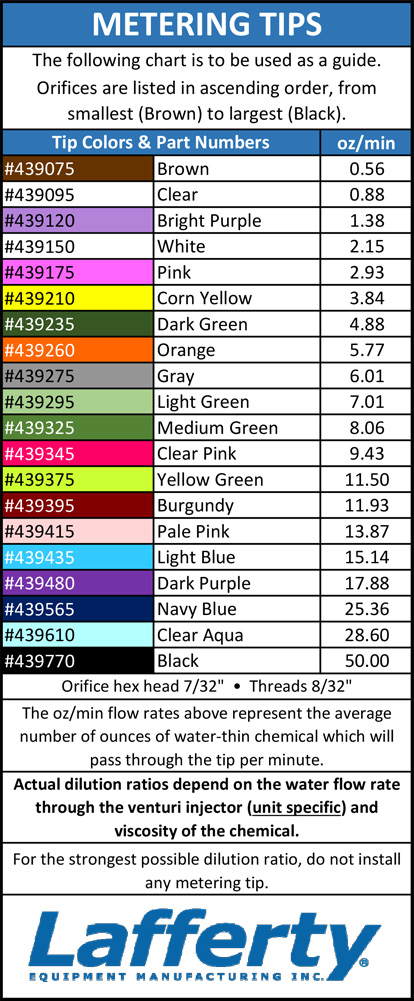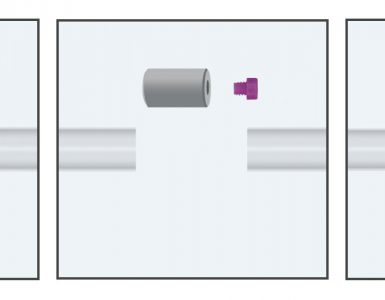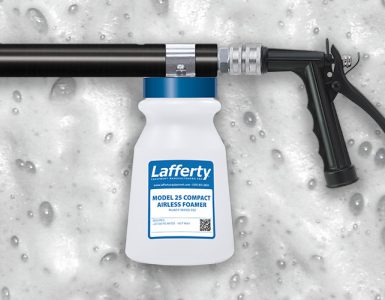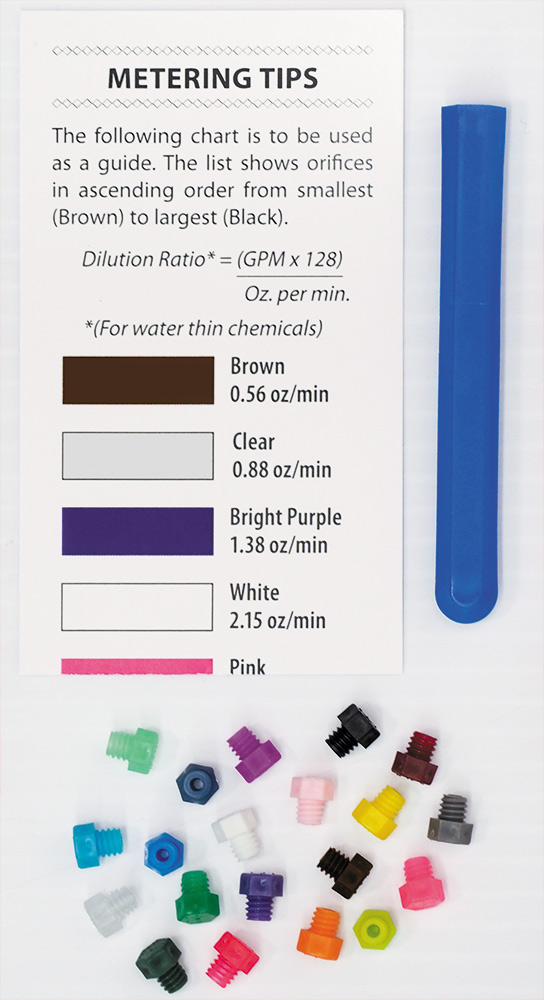
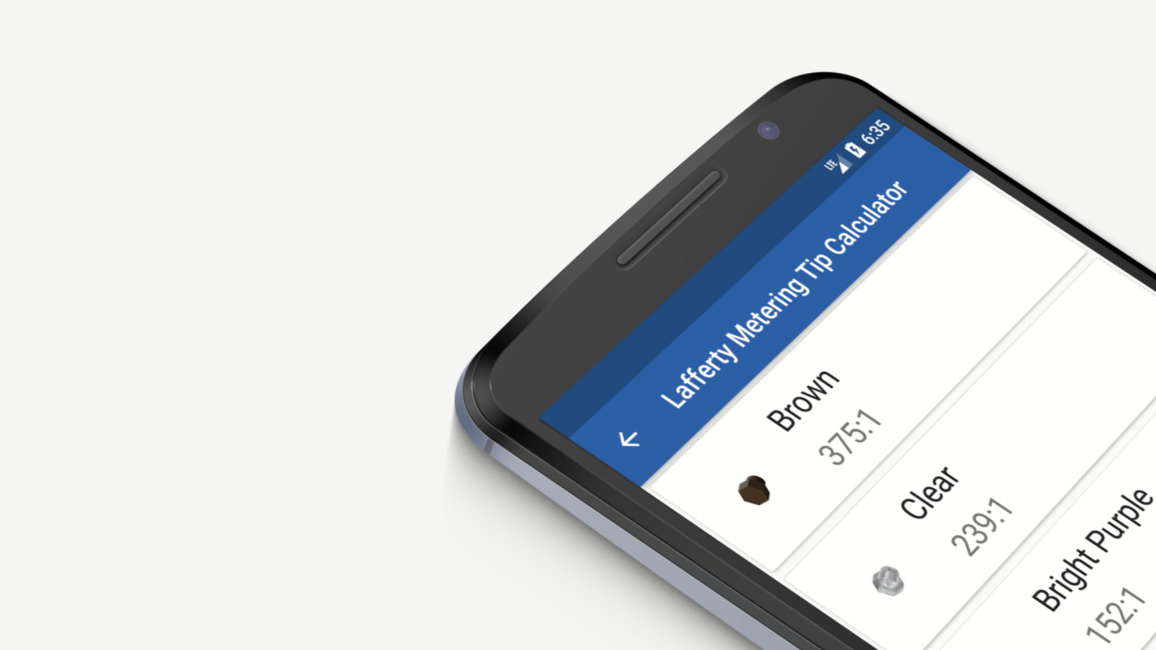
How to Access the Metering Tip Calculator
To assist with calculations and make setup easier, the Lafferty Metering Tip Calculator is available on the Lafferty website and via mobile apps.
Mobile apps do not require an internet connection to use, so they are ideal for installing equipment where reliable internet access may not be available.
Frequently Asked Questions
Click to expand each section.
- Some chemicals will list the dilution ratio directly (16:1 means 16 parts water per 1 part chemical). Some products may list ounces per gallon (7 ounces of chemical per 1 gallon of water). Some products may list other volumetric measurements (2 tablespoons per 1 gallon of water). All of these are dilution instructions.
- Convert the provided dilution instructions to a ratio. TIP: There are 128 fluid ounces in 1 gallon.
Refer to printed instructions (page 2) or the Installation & Operation Instructions (I&O) on our website product detail pages. There you will find a metering tip chart based on the flow rate of that specific unit. Select the tip that is closest to the desired dilution ratio.
IMPORTANT: The ratios in the chart are based on nominal water pressure within the operating range.
Dilution strength will be affected if the water pressure is significantly higher or lower than noted.
To avoid manual calculations…
If you know your actual water pressure, the Metering Tip Calculator can provide the dilution ratio for each tip at various water pressures based on the flow rate of the unit. The Metering Tip Calculator is also helpful because it presents dilutions in other common formats, such as ounces per gallon. See video below.
Adjust the tip size larger or smaller based on results. If the chemical isn’t foaming well in a foamer, try a larger tip. If sanitizer test strips reveal that the chemical output is too weak/strong, adjust accordingly and use a larger or smaller tip. Once you choose and install tip you should rarely, if ever, need to change it.
We offer a Water Pressure/Flow Test Kit to facilitate unit setup and provide validation of water pressure. Mixing Stations for filling spray bottles, mop buckets, sinks, etc. include a water pressure gauge as a standard feature. Contact us if you would like to order gauges on any other water-driven system.
KEY POINT: Do not confuse oz/min (flow rate) with oz/gal (dilution).
The oz/min flow rates in the chart represent the average number of ounces of water-thin chemical which will pass through the tip per minute. Tip colors are listed in ascending order, from smallest (Brown) to largest (Black). See chart below below.
Dilution ratios will be weaker at higher water pressure, so consider reducing the incoming water pressure if it is significantly higher than what is noted in the unit-specific metering tip chart.
Precise dilution ratios are less important for products like car wash soap or simple cleaning products. Cleaning results and/or foaming performance are the ultimate indicators of success. Adjust tip size until you find the “sweet spot” for optimal performance and chemical usage.
Tip Color & Part Number Identification
Replacement metering tips can be ordered in sets or individually using the part numbers below.
| Part Number | Description |
| 443798 | Metering Tips-Color Coded (Full set of 20) |
| 443795 | Metering Tips-Color Coded (10 Largest) |
| 443796 | Metering Tips-Color Coded (5 Largest) |
| 443794 | Metering Tips-Color Coded (10 Smallest) |
| 443793 | Metering Tips-Color Coded (5 Smallest) |
Related Posts
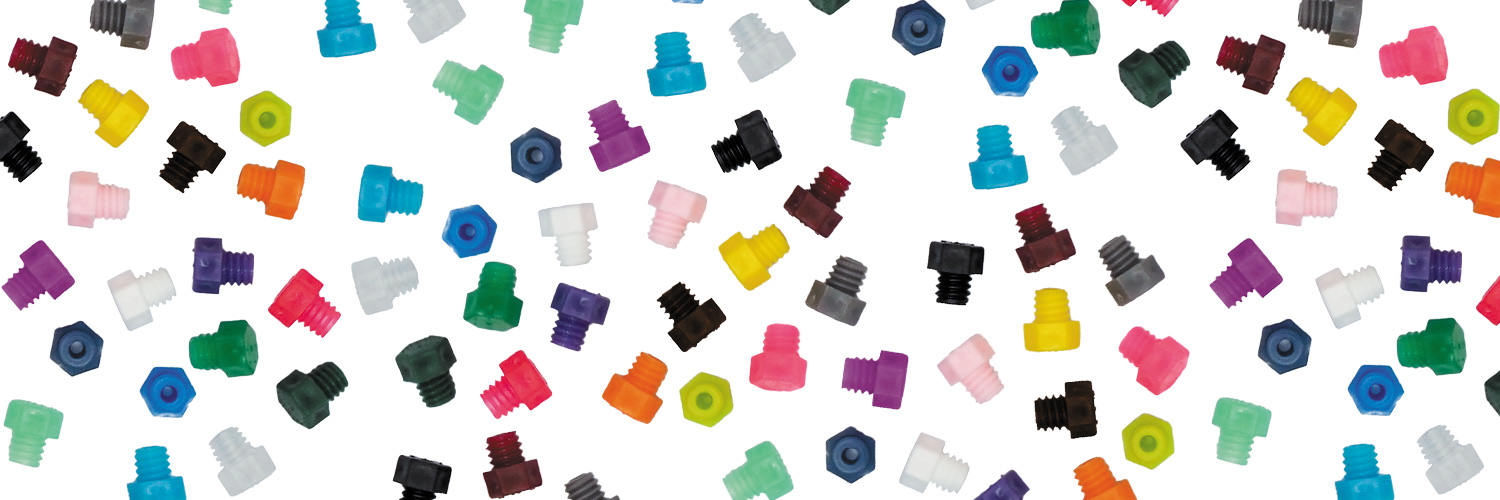
Contact Us
Please submit a contact form or give us a call today!


